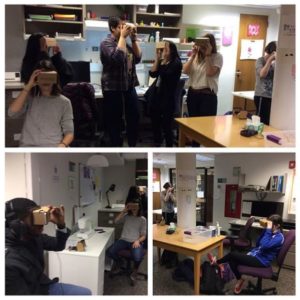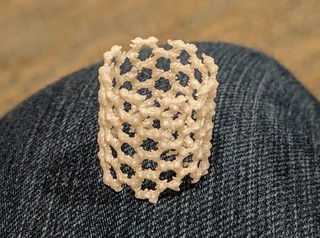To gain a better understanding of life in a refugee camp, Professor Lavanya Proctor brought her Anthropology of South Asia students to the makerspace to experience a virtual reality video. The video entitled, I Am Rohingya, follows a woman named Jamalida as she walks through the refugee camp in which her family lives. The following is the description on Vimeo:
In this immersive VR film by Contrast VR and AJ+, ride with Jamalida around the crowded camp, accompany her inside her tiny home, sit down in the narrow streets with her sons as they play and feel what’s it like to be a refugee stranded in a foreign land.
Prior to coming to the makerspace, students were instructed to download the Vimeo app on their smartphones. Additional smartphones were provided in case students did not have their own. Cardboard VR headsets provided a low-cost, and low-tech way to allow students to immerse themselves in a new surrounding and feel what daily life is like for people living in refugee camps.
While watching the video, students could use audio headsets to block out other sounds and listen at a comfortable volume. They could move through the space and rotate to explore the camp. The VR experience allowed students to immerse themselves much more than passively watching a video. Immersive VR videos like I Am Rohingya give students an opportunity to experience powerful stories, and at between $8-$15, cardboard VR headsets offer a cost-effective way to do this.







